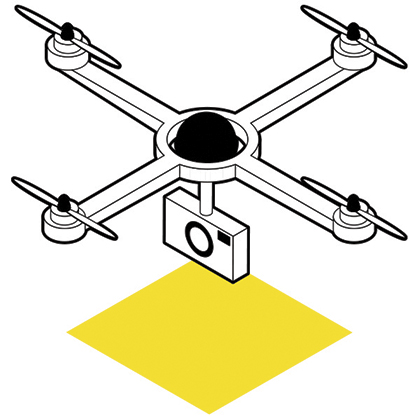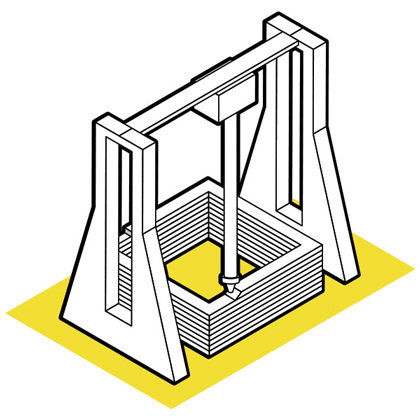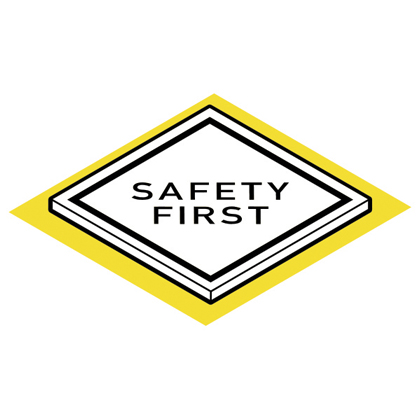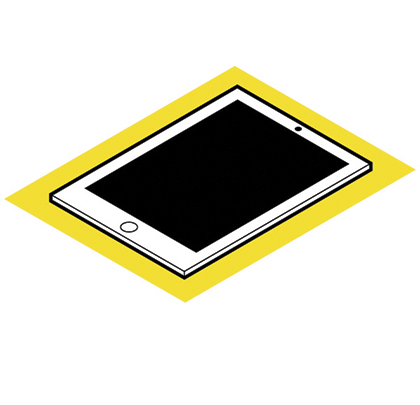From cutting-edge building technologies to innovative construction methods and better decision-making systems, projects are getting smarter. Given the rapid development of emerging construction opportunities, owners should demand faster projects, lower costs, and better buildings. The top 10 trends have been compiled that will shape and improve construction projects in 2016 and beyond. Here are the next five trends.
INTEGRATED MOBILE TECHNOLOGY AND INFORMATION ON JOBSITES
Construction teams are increasingly using mobile devices to file reports and share information on jobsites, streamlining the construction process. The use of this technology reduces costs while improving the reliability of reports and jobsite documentation. Using custom applications on mobile devices, the project team has instant answers to questions that would have previously slowed down a project with trips to jobsite trailers for plan evaluations or calls to the architect. Pictures of jobsite progress can be taken, and Quality Assurance can be improved.
ROBOTIC AUTOMATION
Some jobs in a construction project involve repetitive manual labor and can be automated. Robots and automated technology are emerging to handle certain tasks, such as robotic masonry and brick laying, and will be integrated into projects over the next few years. Skilled workers who can oversee and work in conjunction with robots will become increasingly important as well.

UNMANNED AERIAL VEHICLES (UAVS)
Unmanned Aerial Vehicles (UAVs) are small devices with rotors and an on-board camera that takes stills or sends video to a live feed. Some can be piloted from an iPad, iPhone, or Android device. Project teams are exploring their use in surveying to digitize geographical terrain and create 3D models of a site prior to construction. UAVs can aid in remote jobsite monitoring, inspections, and safer evaluations of hard-to-reach areas, such as 80 feet up a building or underneath a bridge. They can sit atop buildings and monitor energy usage with thermal readings. Upon project completion, UAVs provide aerial building views and can be a marketing tool for those who want to highlight projects or properties. Legality questions remain, but in 2016, the FAA is expected to define licensure requirements for the commercial use of UAVs.

3D PRINTING IN CONSTRUCTION
A 3D printer is a machine that connects with a computer interface to process 3D designs. It uses an extruder filled with a hot, liquid material (almost like a glue gun) and prints the 3D design layer by layer. This technology may impact construction in the future. As projects increasingly use detailed 3D models, 3D printing is a logical future progression. Already, firms have printed houses using giant 3D printers with cement and glass materials. In the last decade, the technology has rapidly progressed. Its benefits include reduction of health and safety risks, the use of recyclable materials, waste reduction, and the capability to build otherwise infeasible design concepts. In the near future, some commercial project teams may 3D-print building components, providing savings and schedule reduction.

ENHANCED JOBSITE SAFETY
As technology moves workers further and further away from the most dangerous tasks, construction projects should get safer. Each year, workers die and sustain injuries from preventable jobsite accidents. It’s one of the biggest problems in construction. The industry already has well-established safety practices, and combined with technology, jobs should be less dangerous. ■
For More Information: The Top 10 Construction Trends in 2016 is compiled by The Korte Company, a national design-build construction company with more than 2,000 projects delivered to date, on-budget and on-time. For more information, visit www.korteco.com.
_________________________________________________________________________
Modern Contractor Solutions – April 2016
Did you enjoy this article?
Subscribe to the FREE Digital Edition of Modern Contractor Solutions magazine.

Construction Trends to Watch in 2016: Part 2 of 2


